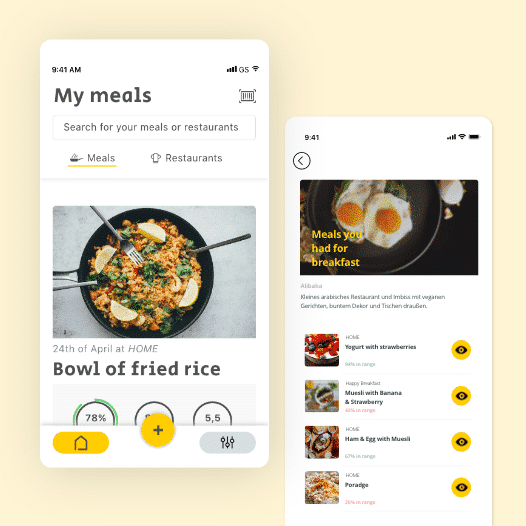MR. RÖHL, YOU HAVE TYPE 1 DIABETES YOURSELF. HOW DID YOU GET THE IDEA FOR THE APP MEALA?
The app was created because I often go to a restaurant myself, be it a pizzeria, a Vietnamese or an Indian restaurant. Every time I thought, man, I’ve been here before last month. Why am I now starting to appreciate the carbohydrates of the meal again? The portion sizes are somehow always the same, everything is standardized. Then I had the idea to combine this information.
HOW DO I USE MEALA WHEN I ENTER A PIZZERIA, FOR EXAMPLE?
GPS positioning automatically suggests the restaurant you are in. If another user has already eaten the dish you want to eat, you can select it and nutritional information is displayed. If it is not yet available, you create a new dish and take a picture, that’s it. The app automatically retrieves all related information.

THIS MEANS THAT BASED ON THE PHOTO, THE APP’S IMAGE RECOGNITION RECOGNIZES THE FOOD?
Right. This works off a huge database. That means there are already a lot of photos that have been tagged. These pictures are then compared to each other. And if they show similarities, the algorithm knows, ah yes, this seems to be a pizza with spinach. This is automatically saved so that the dish can be found again.
UND WAS MUSS MAN DANN TUN?
In a further step I have to estimate for myself how many carbohydrates the food has. I enter the value into another app or into my pump. After about three hours most of the insulin and carbohydrates are used up or digested. Then I can see if I have estimated correctly. That means I get a notification with the information, great, you have landed back in the target area, and then I have a small feeling of success. This data is stored as a dish that I’ve guessed right. At the same time, the spray-eating distance is also displayed, so that the next time I know: Okay, the increase in the curve at the beginning is perhaps due to the fact that I sprayed too late. Or I was briefly in hypoglycemia, then I know I injected too early. This is information that is not available in any app so far.
BUT IT BECOMES REALLY INTERESTING WHEN MANY USERS USE THE APP, RIGHT?
Right. I myself, of course, have an intelligent diary with the app, which helps me when I go to this restaurant a second time. But I also help others with it. The other benefit is that somebody goes into this pizzeria and says, gee, I have the same pizza that Kevin ate. He kind of miscalculated three times, but he got it right the fourth time. That means there are already four values I can use as a guide. The more people use the app, the more data is created. And once we have gone through all the dishes in every restaurant, no one will have to write their own diary anymore
CAN I ALSO USE THE DATA FOR A VISIT TO THE DOCTOR?
Yes, this is a function that was developed in consultation with diabetologists who analyze patients’ values and then determine, for example, here, last month, there was a very strange event. Then you can select the date in the app, jump to the exact place and then you can compare these curves and the meal better. There is also a report function that says: “Please give me all meals with potatoes or all meals where I had pizza. This way you can see if you make the same mistake over and over again.
Many thanks for the interview, Mr Röhl!
Interview in preparation to the bytes4diabetes Award with Kevin Röhl at 13.12.2019

